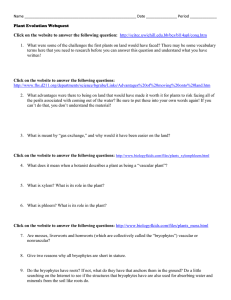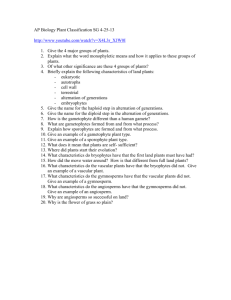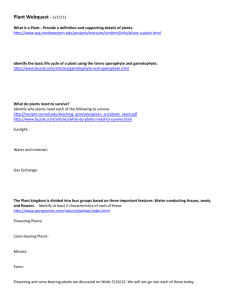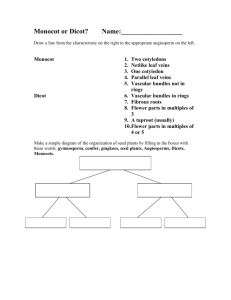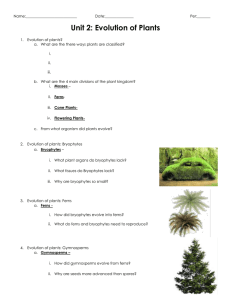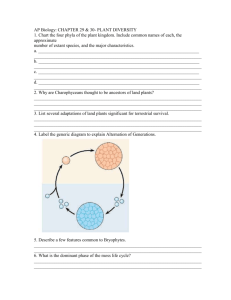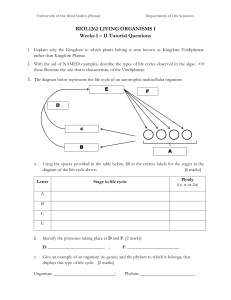Biology Study Guide CH 22 Plant Diversity (Entire Chapter)
advertisement
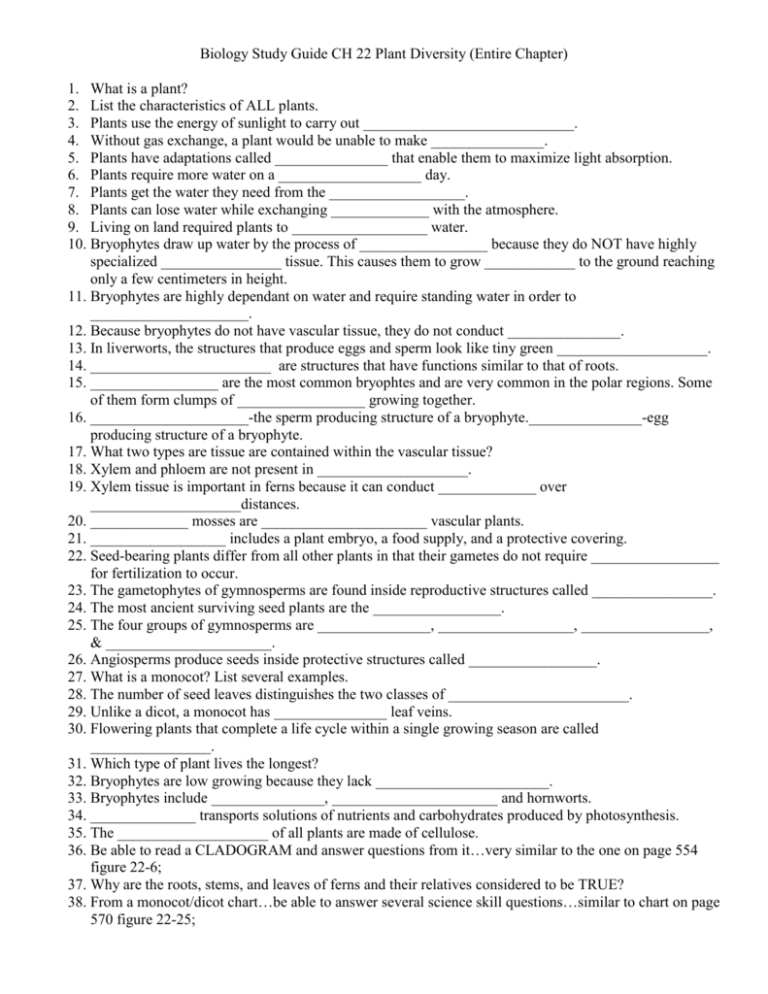
Biology Study Guide CH 22 Plant Diversity (Entire Chapter) 1. What is a plant? 2. List the characteristics of ALL plants. 3. Plants use the energy of sunlight to carry out ____________________________. 4. Without gas exchange, a plant would be unable to make _______________. 5. Plants have adaptations called _______________ that enable them to maximize light absorption. 6. Plants require more water on a ___________________ day. 7. Plants get the water they need from the __________________. 8. Plants can lose water while exchanging _____________ with the atmosphere. 9. Living on land required plants to __________________ water. 10. Bryophytes draw up water by the process of _________________ because they do NOT have highly specialized ________________ tissue. This causes them to grow ____________ to the ground reaching only a few centimeters in height. 11. Bryophytes are highly dependant on water and require standing water in order to _____________________. 12. Because bryophytes do not have vascular tissue, they do not conduct _______________. 13. In liverworts, the structures that produce eggs and sperm look like tiny green ____________________. 14. ________________________ are structures that have functions similar to that of roots. 15. _________________ are the most common bryophtes and are very common in the polar regions. Some of them form clumps of _________________ growing together. 16. _____________________-the sperm producing structure of a bryophyte._______________-egg producing structure of a bryophyte. 17. What two types are tissue are contained within the vascular tissue? 18. Xylem and phloem are not present in ____________________. 19. Xylem tissue is important in ferns because it can conduct _____________ over ____________________distances. 20. _____________ mosses are ______________________ vascular plants. 21. __________________ includes a plant embryo, a food supply, and a protective covering. 22. Seed-bearing plants differ from all other plants in that their gametes do not require _________________ for fertilization to occur. 23. The gametophytes of gymnosperms are found inside reproductive structures called ________________. 24. The most ancient surviving seed plants are the _________________. 25. The four groups of gymnosperms are _______________, __________________, _________________, & ______________________. 26. Angiosperms produce seeds inside protective structures called _________________. 27. What is a monocot? List several examples. 28. The number of seed leaves distinguishes the two classes of ________________________. 29. Unlike a dicot, a monocot has _______________ leaf veins. 30. Flowering plants that complete a life cycle within a single growing season are called ________________. 31. Which type of plant lives the longest? 32. Bryophytes are low growing because they lack _______________________. 33. Bryophytes include _______________, ______________________ and hornworts. 34. ______________ transports solutions of nutrients and carbohydrates produced by photosynthesis. 35. The ____________________ of all plants are made of cellulose. 36. Be able to read a CLADOGRAM and answer questions from it…very similar to the one on page 554 figure 22-6; 37. Why are the roots, stems, and leaves of ferns and their relatives considered to be TRUE? 38. From a monocot/dicot chart…be able to answer several science skill questions…similar to chart on page 570 figure 22-25;


